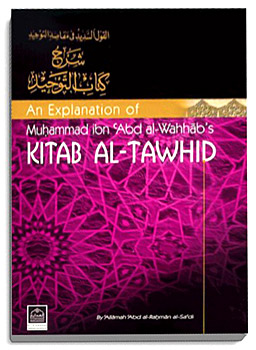 Wahhabite Movement was a kind of reform movement in Islam launched in the eighteenth century. The Wahhabite movement basically called for Tawheed, i.e., a belief in the oneness and divinity of God. The Wahhabis wanted to rid Islam of the various innovations that had set into the religion and called for a return to the monotheistic religion. The followers of the movement wanted to revive the ideas of the two notable figures, Sheikh Ibn Taimiyah and his disciple, Ibn al Qayyim.
Wahhabite Movement was a kind of reform movement in Islam launched in the eighteenth century. The Wahhabite movement basically called for Tawheed, i.e., a belief in the oneness and divinity of God. The Wahhabis wanted to rid Islam of the various innovations that had set into the religion and called for a return to the monotheistic religion. The followers of the movement wanted to revive the ideas of the two notable figures, Sheikh Ibn Taimiyah and his disciple, Ibn al Qayyim.
Founder of Wahhabite Movement
The theological founder of this movement, Muhammad ibn Abd al Wahhab came, like many other theologians, from a family which had already produced many scholars who had held posts in various small towns in Neja or Central Arabia. He studied Hanbali Jurisprudence, Tafsir (Quranic Interpretation) and Hadith from his learned father. After studying under his father and in Mecca, he spent some time in Medina as a student, and later went also to Basra in quest of knowledge. From an early age he was aware of the decadence of popular religion in Arabia and of the need for thorough reform.
His first attempts at reform, on his return to Arabia, met with opposition, but in 1744 he was able to make an agreement with the Emir (belonging to the family of Suud) of the small town of Dariyya. The dynasty of Suud prospered enormously, and in the opening years of the nineteenth century, when they were already rulers of much of Arabia, also occupied Mecca and Medina. But the occupation of the holy cities by the Wahhabites disturbed many Sunnites, and on the instructions of the Ottoman sultan an Egyptian army invaded Arabia (1813-18) and put an end to the Suudite principality for the time being. Through the dynasty`s ups and downs of fortune up to the establishment of the kingdom of Saudi (or Suudi) Arabia in 1930 the association with Wahhabism remained, and the kingdom is still essentially a Wahhabite state.
Theology of Wahhabite Movement
The theology of the Wahhabites adopts much from the writings and works of Ibn Taymiyya. Its clearest dependence on Ibn Taymiyya is in its attack on the cult of saints and its general insistence on a return to the purity of original Islam. The leaders of the movement asked the people to stick to the teachings of the Holy Quran and the Prophetic tradition. The founder of the movement wanted to rid the religion of polytheism and bring back the fervour of the days gone by. However, for the most part it is concerned largely with externals, like much of Islamic religious thought. Not much is taken from the methodology of Ibn Taymiyya, which he devised in order to escape from the rigidity of the scholastic methods and to make possible an adaptation of Islamic truth to contemporary conditions. Much the same is true of the so-called Wahhabites of India, who appeared in the early nineteenth century, stimulated by an armed movement under Sayyid Ahmad (1786-1831) against the Sikhs and the British. In origins the movement was due to internal Indian causes, but in 1823 Sayyid Ahmad came under Wahhabite influence while on the pilgrimage to Mecca. Something of the Wahhabite spirit has been retained in the important theological seminary at Deoband.
Thus the Wahhabite movement, though a reform movement, was actually a call back to conservatism.




















